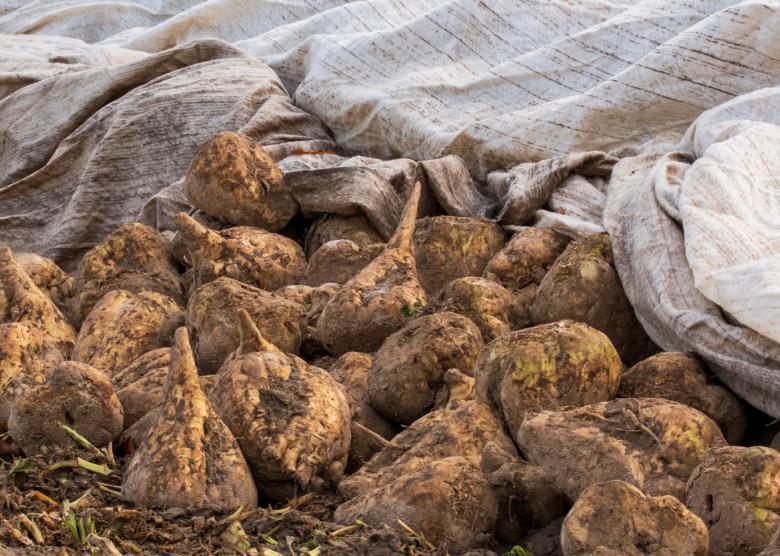The Fantastic Argument: Beet Sugar Vs Cane and Their Influence On Wellness
The ongoing dispute bordering beet sugar and walking cane sugar elevates critical concerns regarding their corresponding health and wellness effects and more comprehensive ramifications for customer options. While both sugar share a similar chemical make-up, their origins and handling techniques might affect not just nutrition but also ecological sustainability. As health-conscious individuals evaluate the benefits of each choice, the ramifications of chemical exposure and agricultural methods enter into focus. This conversation invites us to think about not just the sweet taste we choose, but the far-reaching effects of those choices on our health and the world. What might this imply for future usage patterns?
Review of Sugar Sources
Sugar, a commonly taken in sugar, largely stems from two primary sources: sugar beets and sugar cane. These crops are cultivated in different areas around the globe, each adding to the international sugar supply in unique means. Sugar walking cane prospers in tropical and subtropical environments, with significant manufacturers consisting of Brazil, India, and China. The plant is harvested for its stalks, which are then refined to draw out juice and crystallize sugar.
Conversely, sugar beets are mainly grown in pleasant areas, with considerable manufacturing in countries such as the United States, France, and Germany. The beetroots are harvested from the ground, cut, and based on a process that converts the extracted juice into granulated sugar. While both sugar sources eventually generate sucrose, their farming methods, refining methods, and geographic circulations vary markedly.
These distinctions can influence not just the environmental effect of sugar production but also the financial aspects of sugar rates and trade. Understanding the origins of these sugar is vital for consumers and policymakers alike, as it lays the structure for notified conversations about their health and wellness effects and sustainability.
Nutritional Contrast
When examining the nutritional accounts of beet sugar and walking stick sugar, both sources share a comparable make-up as they primarily contain sucrose. Sucrose is a disaccharide, made up of sugar and fructose, and is accountable for the sweetness related to both sugars. The refining processes for both beet and walking cane sugar yield products that are predominantly pure sucrose, with very little traces of vitamins, minerals, or other nutrients.
In regards to calorie content, both beet and walking cane sugars give around 4 calories per gram. Neither kind of sugar provides considerable dietary benefits past energy arrangement, as they lack essential vitamins or minerals. Nevertheless, the visibility of trace components, such as potassium, calcium, and magnesium, can differ somewhat between the two, mainly as a result of the farming techniques and soil conditions in which they are expanded.
Furthermore, the glycemic index values of beet sugar and cane sugar are comparable, indicating comparable impacts on blood sugar degrees. On the whole, from a nutritional standpoint, beetroot and walking stick sugars are functionally equivalent, adding mostly to calorie intake without providing significant wellness benefits over one an additional.
Wellness Ramifications
The health and wellness ramifications of consuming beet sugar and walking cane sugar warrant careful consideration, especially offered the climbing occurrence of sugar-related wellness concerns. Both types of sugar add comparable caloric values and can bring about enhanced threats of weight problems, type 2 diabetes mellitus, and cardiovascular conditions when eaten over. The body metabolizes both sugars into glucose, which can create spikes in blood glucose degrees, causing insulin resistance over time.
While there is ongoing debate have a peek at these guys relating to the glycemic index of these sugars, researches suggest that both can adversely influence metabolic wellness if eaten in huge quantities. beet sugar vs cane. Furthermore, the prospective visibility of contaminants in beet sugar, such as chemicals from standard farming techniques, increases more wellness worries. Conversely, cane sugar, particularly when minimally refined, might use a slightly more favorable account as a result of its natural state
Furthermore, the consumption of sugarcoated, no matter of the resource, is linked to damaging health and wellness outcomes, consisting of oral concerns and fatty liver illness. For that reason, small amounts is vital, and people must be mindful of their overall sugar intake from all resources, inevitably focusing on whole foods over added sugars for optimal health and wellness end results.
Ecological Impact
Understanding the health and wellness effects of beetroot and walking cane sugar likewise leads to an assessment of their ecological impact, which can considerably influence farming sustainability and ecological balance. Both sugar sources have distinctive ecological footprints, formed by their farming methods and geographical requirements.

In contrast, beet sugar is generally grown in pleasant environments and frequently includes diverse crop rotations. This practice can boost dirt health and lower reliance on chemical inputs. Nevertheless, extensive beetroot farming can additionally lead to vitamins and mineral depletion and pest stress if not taken care of sustainably.
Both sugar types existing difficulties and chances for environmental stewardship. Promoting sustainable farming practices and liable sourcing can minimize their influences, guaranteeing that sugar manufacturing lines up with eco-friendly conservation and lasting food safety and security.
Consumer Preferences
Amidst expanding understanding of health and environmental issues, consumer preferences for sugar types are increasingly affected by perceptions of health benefits, sustainability, and ethical sourcing. Beet sugar and cane sugar each present unique attributes that interest various customer demographics.
Health-conscious consumers commonly inspect the dietary profiles of these sugars, seeking alternatives viewed as less processed or more natural. Cane sugar, commonly pertained to as the typical sugar, check here is often favored for its perceived pureness and simpleness. On the other hand, beetroot sugar, which is frequently originated from genetically changed crops, encounters uncertainty amongst those worried regarding GMOs.
Sustainability is an additional substantial variable influencing consumer choices. As awareness of farming methods expands, several consumers select products that line up with eco-friendly farming techniques. Cane sugar manufacturing, especially when sourced from lasting ranches, can interest eco-conscious purchasers.
Moral sourcing plays a vital duty as well, with consumers significantly favoring products that support fair labor practices. Certifications such as Fair Trade can improve the appearance of cane sugar in the marketplace. Eventually, consumer preferences are formed by an intricate interaction of wellness, ecological, and honest factors to consider, driving demand for both beet and cane sugars in varied markets.
Final Thought
To conclude, the discussion between beet sugar and walking stick sugar incorporates numerous variables, including dietary profiles, health effects, and environmental consequences. beet sugar vs cane. While both sugars primarily include sucrose and exhibit comparable caloric material, worries pertaining to chemical usage in beetroot sugar and the ecological effect of walking cane sugar monoculture warrant careful factor to consider. As customers significantly prioritize sustainability and health and wellness, notified options relating to sugar consumption become important in advertising general wellness and environmental stewardship
